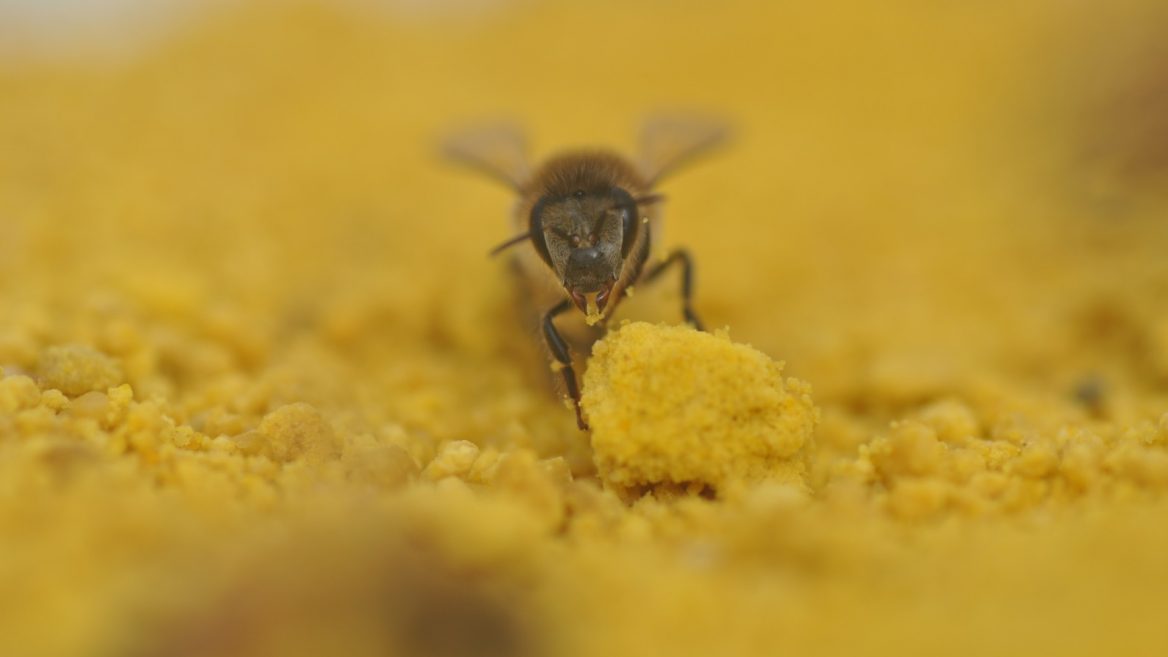Archives – September, 2017
From: Daily Democrat
By Christine Souza, Ag Alert
After watching bees for hours to see how they travel in an almond orchard, researchers found that having native or wild bees present in combination with managed honeybees increases pollination. This concept of integrated crop pollination — or ICP — was one of many research projects presented to beekeepers at the 40th annual Western Apicultural Society conference at the UC Davis.
***
Bernardo Niño, staff research associate in the UCD Entomology and Nematology Department, described the Varroa mite as “the No. 1 pest of honeybees” for commercial beekeepers in California.
September 29, 2017
From: DNA Data Bank of Japan
DDBJ released genome data of honeybee mite (Varroa destructor) which had been submitted by Okinawa Institute of Science and Technology Graduate University.
The accession numbers are as follows. They are available on getentry.
- WGS
- BEIS01000001-BEIS01001425 (1,425 entries) BEIS.gz
September 29, 2017
From: The Star (North Augusta, SC)
By WHIT GIBBONS, Columnist
Honeybees are making a comeback. The two hives I monitor produced enough honey this summer to fill a dozen quart jars. Professional beekeepers in the region, who gather much more honey that that, smile politely at my modest harvest. A few years ago, though, they were not smiling, because of an invasive parasite known as the varroa mite.
September 28, 2017
From: Nature
Scientific Reports 7, Article number: 8005 (2017)
Dara A. Stanley & Nigel E. Raine
September 27, 2017
From: Genetic Literacy Project
Jon Entine
***
The ‘other’ study
Only this time, on the very same day that Nature published Gemma Baron’s team’s study, it also published a study by Dara Stanley, also teamed with Nigel Raine. More prosaically titled, ‘Bumblebee colony development following chronic exposure to field-realistic levels of the neonicotinoid pesticide thiamethoxam under laboratory conditions,’ this study subjected different groups of mature Bombus terrestris colonies to two different neonic exposure levels—2.4 ppb and 10 ppb—or up to 27 days. The study didn’t benefit from advance press advisories—and predictably, unlike its sister study, it was not heavily promoted by Guelph and received no press attention.
September 26, 2017
From: WIVB.com
By Ali Ingersoll, News 4 Reporter
***
And that include varroa mites, a parasite in the tick family which causes the bees to have many different issues including weakened wings. According to the New York State Beekeeper tech team, 90% of hives tested across the state have these mites present.
“The mites get in the cell, they feed off the pupae of the bee and it weakens the immune system,” explains Baglio. “They’ve gotten some resistance to it but if you don’t treat for these mites, within two years your colony will pretty much die.”
September 25, 2017
From: AgWeb
By Alison Wedig
The U.S. Department of Agriculture (USDA) released a positive report on honey bee colonies this past spring. The number of commercial U.S. honey bee colonies was 2.89 million as of April 1–3% more colonies than during the same time frame in 2016. The total number of honey bee colonies lost was also lower in 2017. The number of colonies lost from April through June 2017 was 226,000 colonies, or 8%, compared to 330,000 colonies lost, or 12%, in 2016.
***
September 25, 2017
From: CTV News
***
“We’re trying to make a local, adapted resistant bee,” said master beekeeper Iain Glass, who’s helping spearhead the project. “The bees are very much in crisis and unfortunately a very large number of imported bees are brought in to Canada every years, tens of thousands of them.”
Glass said those imported bee populations attract diseases and mites, and death rates in some areas can be up to 75 per cent.
Read Complete Article
September 20, 2017
From: The Lebanon Enterprise
…Beekeepers from Marion and adjacent counties were able to take advantage of this free service. In conjunction with the equipment cleaning, the Washington County Beekeepers and guests completed training in a new method of controlling varroa mites, a significant parasitic health threat to bee colonies.
Read Complete Article
September 20, 2017
From: Israel21c
Fewer wildflower choices thwart bees’ natural inclination to choose a balanced diet and they suffer cognitively from lack of omega-3 acids.
By Abigail Klein Leichman
 A bee in the Benjamin Triwaks Bee Research Center in Rehovot. Photo by Shlomi Zarchin
A bee in the Benjamin Triwaks Bee Research Center in Rehovot. Photo by Shlomi Zarchin
***
“Our specific research is on understanding bee diets and how they choose their diets. We know they need nectar and pollen, and that all comes from flowers,” Bee Research Center director Prof. Sharoni Shafir tells ISRAEL21c.
September 19, 2017
Previous page
 A bee in the Benjamin Triwaks Bee Research Center in Rehovot. Photo by Shlomi Zarchin
A bee in the Benjamin Triwaks Bee Research Center in Rehovot. Photo by Shlomi Zarchin